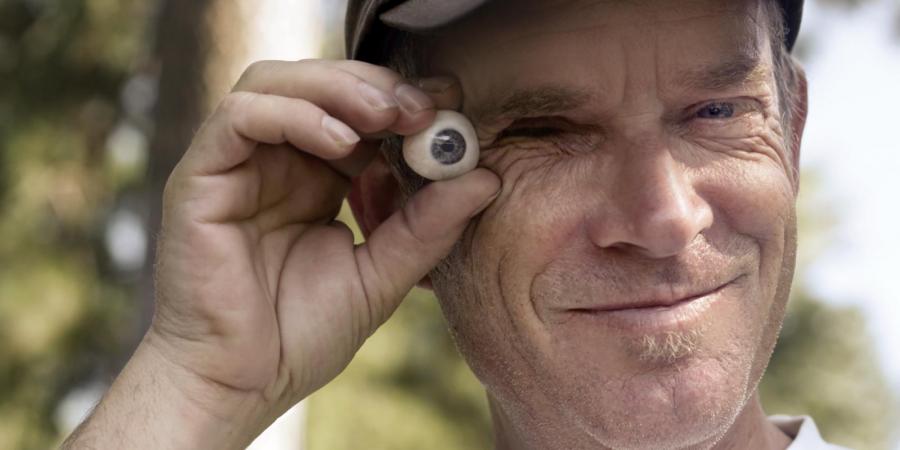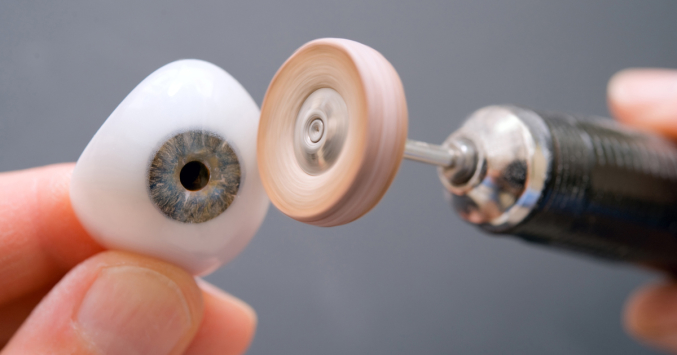Your New Ocular Prosthesis - The Fittings Involved

When getting an eye prosthesis for the first time it can be a very nerve wracking experience. Don’t panic. We’ve been working with patients for over 25 years and have heard all sorts of questions so don't think any questions are too simple or too difficult to be answered. If you have questions then please ask and we'll answer whatever we can for you, or find out for you, so that your mind is at ease during the process.
Both Beryl and Pedro are qualified Ocularists and are two of the 7 *OASA registered Ocularists in South Africa. OASA is a **SAQA recognized Professional Body with the designation of Ocularist registered on the ***NQF. In our practice, Pedro manages the Business while Beryl focuses on manufacturing and fitting the eye prosthesis for you. Vivienne handles all the bookings of the appointments. (*Ocularist Association of Southern Africa - **South African Qualifications Authority - *** National Qualifications Framework).
At your first appointment with the practice we'll be focusing on what your existing eye or newly removed eye socket looks like, the functionality of inserting the new eye prosthesis for you and any eye lid damage that needs to be considered. Things like volume loss in the eye socket will be an issue. All our patients have lost some volume in the upper lid area. There are only one or two exceptions to this rule but generally the older we get the more fatty tissue we lose in this upper lid area, making it appear more hollow than above the sighted eye. At this first appointment we'll also discuss payment and medical aid authorities if we haven't dealt with this on email with you already. This first appointment usually takes about an hour.
The psychological aspect of losing an eye is huge. Do not under estimate this and you are urged to seek the assistance of a professional in this regard, the loss of a part of your body like this is as traumatic as the loss of a loved one. Speak to Beryl about a referral.
The next appointment, sometimes incorporated into the first one, is to begin the work by taking an impression of the eye socket. This is done by inserting what is called an impression tray or impression shell under the lids in order to keep the eye lids out of the way. These shells or trays come in various sizes and shapes but are not designed for your specific eye or socket so may not be comfortable initially. Once the impression tray has been inserted a "jelly-like" substance, called alginate, is squirted into the socket and is allowed to set whilst the patient looks straight ahead. This takes about a minute but is one of the most essential stages as without an accurate reading of the back of the eye or eye socket we are unable to achieve best movement, comfort, shape and size when fitting the next stage, the clear model.
So, to recap, this first session of work on the socket is uncomfortable but we do this work on small children and babies in the consulting rooms so it is bearable. Patients usually say the pain they've been through in the past with surgery was much more difficult to bear and that this discomfort cannot actually be equated with actual pain.
After you leave this session we’ll begin manufacture of a temporary clear model that you’ll wear at the next session. We usually book appointments while you’re with us for the following session as these sessions are all dependant on your eye socket being ready to be worked on, swelling and healing-wise.
When you come for the second session we’ll begin the long, meticulous job of getting the shape and size right. This appointment is initially booked for two hours, sometimes it takes less time, and sometimes more of these two-hour sessions are required before we get this stage right. There is no use continuing until we get the shape, size, comfort and movement as best we can. If you swell during these sessions, as much as we know you want to receive your new eye as soon as possible, we’ll re-book the appointment because if the eye swells the shape and size won’t be optimal for long term and you’ll be uncomfortable with an ill-fitting eye prosthesis.
So, the size, shape, comfort and movement are all assessed with the clear acrylic model that we insert. Patients say that this session is not painful but it can irritate the socket as we are inserting and removing the eye prosthesis repeatedly to change and cut it down or add onto it, or both cut down in one area and then add in another. Once we get the model as close in shape and size to the sighted eye as possible, we then mark it for position and angle of the pupil. Your pupil is the “black” inner circle of the iris colour. It’s actually not black at all, but a hole that you see through. The iris is the brown, green or blue portion of the eye and the white of the eye is called sclera.
On the same day as completing the clear model we paint the iris and pupil onto a round “button” that we’ve cut on a lathe. Beryl will paint while you’re with her and copy from your sighted eye. With our blind patients, we ask that you bring a photograph or a family member as a model we can work from.

Now the job goes back to the workshop and Beryl will make a mould in two halves, a negative of the clear model we’ve made with your co-operation. For the sclera, or white, a shaded plastic is mixed and whilst at a putty consistency inserted into the mould with the iris button in position and the beginning of the final eye is cured in our specialized curing unit for the material we use, Poly Methyl Methacrylate, (PMMA).
Once the material has cured then it’s time to see the patient again. We’ll cut the front surface off of the eye prosthesis and insert veins and paint splotches for the scleral shading and can even make tints over the iris where needed. This session takes about 45 minutes.
The eye prosthesis now needs a coating of clear acrylic over the front surface where it has previously been cut down for painting of veins and thus it goes back into the negative mould and is sent through the curing unit for a second time in order to cure the clear acrylic front surface.
The next appointment is the first fitting of your new prosthesis. This can sometimes not go as well as expected so we always suggest you don’t book a big function to unveil your eye prosthesis on the same day just in case we need to first make adjustments, or at worst, we may reject the result of that eye prosthesis necessitating that we make a neweye prosthesis.
Our work is very artistic in the consulting room while working with you and then we have the chemical component in the workshop to contend with. All these aspects need to come together in order for the product to be good. Perfection is what we strive for but sometimes miracles take a little longer. Letters to your company can be written explaining these long sessions.
Curing of the material is not a quick process. This takes either the whole day or the whole night in the curing unit at our practice. Eyes Alive and its Ocularists do not believe in doing a job unless it’s done well and we are sure you agree that while it can take longer at our practice in the manufacture process in the workshop that since this is optimal to the good health of your eye socket or blinded eye behind the eye prosthesis we’ve manufactured, it needs to be done correctly. It is in our control to manufacture and fit an ethically correct product and the product that leaves here will have been through the longer curing times recommended by the manufacturers in order to give you the very best product that does not cause irritation to the eye socket over time. Some patients suffer from either dry eyes or excessive discharge when the material is not cured optimally.
Once your eye prosthesis has been manufactured and you’ve been trained on insertion and removal techniques then we’ll see you again about 2 - 3 weeks after fitting of your new eye prosthesis to check how the eye prosthesis has settled.
"Time, a Great Healer" - Beryl Carvalho (Ocularist, Eyes Alive)
Time heals is a well-known proverb. At Eyes Alive we have embraced this philosophy, but from a literal perspective. Considering the challenges facing patients who are in need of an ocular prosthesis, we dedicate as much time as necessary to each and every patient, not only to ensure that our patients receive a prosthetic eye of the highest quality, but to address the very important emotional aspects.
Indeed, we may take a little longer but our patients know that they will receive the desired care, attention and time to result in aesthetically attractive prostheses …with dignity. "
Contact Us
Operating Hours
Monday - Friday: 9:30 am - 5:00 pm
1 Saturday a month: By appointment only
Sunday: Closed
Let us call you
Provide your details to us and we will be in touch with you.

